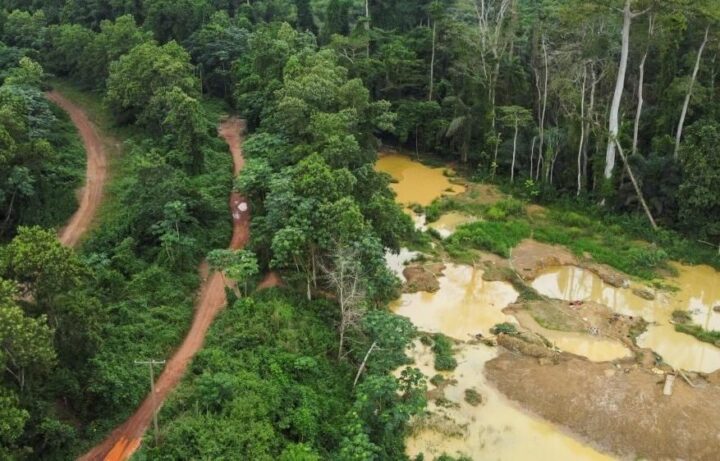By Gideon Amuah | Email – gideon.amuah@gmail.com
Few challenges test Ghana’s conscience and capacity like galamsey. Illegal small-scale mining has scarred the nation’s land, poisoned its rivers, and left communities divided between survival and destruction. While the environmental damage is visible, the deeper crisis is in food security. Every acre lost to galamsey is an acre taken from farming; every polluted river is a broken lifeline for food production. Solving galamsey is not just about saving the environment—it is about saving Ghana’s ability to feed itself.
But the path to a solution is not simple. The government faces a tangle of economic, political, and social constraints. Galamsey thrives because it sits at the intersection of poverty, unemployment, weak enforcement, and the lure of quick wealth. Thousands of young people, especially in mining regions, turn to it out of necessity, not greed. For many families, it is the only livelihood that promises cash. Any government response that relies solely on punishment will fail if it does not address these underlying economic drivers.
One major challenge is enforcement capacity. Ghana’s laws are clear: mining without a license is illegal. Yet enforcement agencies often lack the resources, coordination, or political backing to act decisively. Local political interests sometimes interfere with crackdowns, especially where votes depend on mining communities. Corruption within some enforcement ranks has also weakened public trust. Without consistent, transparent enforcement backed by political will, galamsey will continue to slip through the cracks.
The second challenge lies in economic alternatives. Many galamsey operators are farmers or youth who abandoned agriculture because it no longer pays. With rising input costs, unpredictable rainfall, and limited access to markets, farming has become a high-risk, low-return venture. Galamsey, in contrast, offers immediate cash—even if it destroys the very resources on which communities depend. If the government wants to eliminate galamsey, it must make agriculture more profitable, accessible, and secure.
Despite these challenges, there are real opportunities for a national turnaround. The same government machinery that has mobilized against illegal mining can be redirected toward restoration and reinvestment. A three-pronged approach—regulation, reclamation, and reintegration—could turn crisis into opportunity.
First, regulation must become credible and consistent. The government can strengthen the Minerals Commission and the Environmental Protection Agency with better technology—such as satellite monitoring and drone surveillance—to detect and deter illegal operations in real time. Enforcement should be swift and impartial, targeting financiers and equipment suppliers, not just poor miners. Transparent prosecution records can restore public confidence that the law is applied fairly.
Second, reclamation must move beyond promises to visible results. Large swathes of degraded land can be restored through coordinated efforts involving local assemblies, the Forestry Commission, and private investors. Reclaimed lands can be repurposed for rice, maize, and vegetable production or reforested to protect watersheds. The government’s reclamation fund, if properly managed, can create jobs while turning scarred landscapes into productive farmland again.
Third, reintegration is key. The youth drawn to galamsey need alternatives that match the allure of quick returns. Agriculture can provide that if it is modernized. Investing in irrigation, mechanization, and value-added agro-industries can turn farming into a business rather than a struggle. The government, in partnership with development agencies and private investors, can train former miners in agribusiness, aquaculture, or land restoration. With proper incentives and access to finance, the same energy-driving galamsey can be redirected toward productive work.
Beyond these measures, the government must also protect critical river basins as national security zones. The Pra, Ankobra, Offin, and Birim rivers are not just natural resources, they are strategic assets for food production and human survival. Their protection should be enforced with the same seriousness as guarding Ghana’s borders. Technology can help, but the greatest tool will be civic mobilization, making citizens guardians of their own water sources.
Galamsey has turned parts of Ghana’s lush farmlands into wastelands, but it has also revealed the fragility of our national priorities. The real gold is not in the soil, it is in the crops we grow, the rivers that feed them, and the people who depend on both. By tackling galamsey with honesty, courage, and foresight, Ghana can secure not only its environment but also its food future.
The time for hesitation is over. We must choose between gold and grain, between greed and growth. Our future—and the food on our tables—depends on it.


